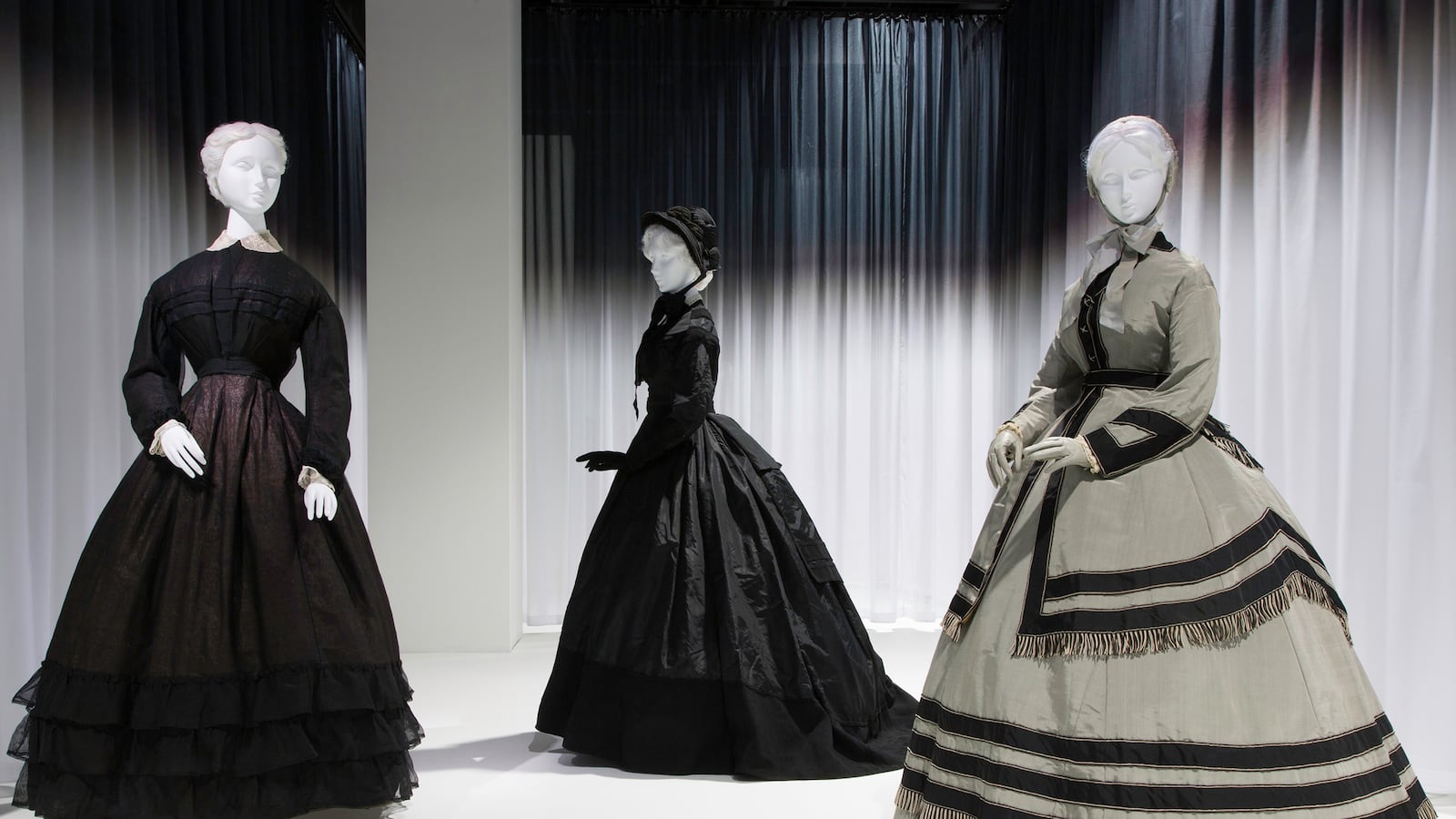All-black attire hasn’t always been reserved for coffee shop poets and champagne-sipping fashionistas. Up until the turn of the 20th century, it was almost exclusively a sign of mourning: women publicly showing respect for the loss of a loved one.
But, somewhere between the fury of the industrial revolution and women’s liberation, the tradition itself died out, leaving only a brief implication that lingers in graveyards and funeral services with fleeting significance.
Now, the Metropolitan Museum of Art is revisiting the trend, taking visitors back to black with the debut of the Anna Wintour Costume Institute’s first fall exhibition in seven years. Death Becomes Her: A Century of Mourning Attire, which opens today (Tuesday), explores the custom of mourning dress from 1815 to 1915.

“[Women] really felt like their mourning dress was an indication of their inner feelings of grief,” Harold Koda, the curator in charge of The Costume Institute, said. “It was a way of coming to terms with a loss and memorializing them.”
The thirty ensembles selected from the museum’s permanent collection vary in shapes and styles, reflecting all of the period’s trends in fashion. Leather bonnets that marked the early 19th century gave way to styled hair and lavishly veiled hats of the 20th century. Hoop skirts of the Civil War era relaxed into flowing, streamlined gowns.
Color also varied. As mourning time progressed and the emotional strain began to subside, the black hues began to lighten. Touches of white lace were added; gray or mauve tones seeped into the fabrics and ornamental accessories began to re-appear, marking a women’s emergence back into society, ready to move forward with her life.
Even those set to wed embraced the style on their special day.
At its peak in 1868, Amelia Jan Carley forewent a traditional white wedding gown for a grey-toned bodice and hoopskirt accented with black ribbons and fringe at the bottom of each layer. During a time when so many were still grieving losses, its display amongst the somber attires of women and children within the gallery, mark a tone that was meant to honor all who had fallen during the Civil War, instead of memorializing a specific individual.
Decades later, the most lavish of mourning frocks can be seen in evening gowns worn by Queen Alexandra in 1902, the year after Queen Victoria’s death, which express the opulence of court dress in tones of half-mourning.

Designed by Henriette Favre, a famous French couturier, one black dress is embellished with metal sequins that reflect flashes of mauve. The other, similarly designed, uses a golden fabric as its base for the purple sequins. No longer were women adhering to the strict dress codes of previous generations.
“Her mourning garb, if mourning it could be called, represented an extreme of the prevailing fashion; its glint and rustle inspired awe in the female observer,” the English novelist George Gissing wrote in The Odd Women (appearing on the wall amongst other quotes of historical reference). “A moment ago the drawing-room had seemed empty; Mrs. Luke, in her sole person, filled and illuminated it.”
By 1915, mourning attire had begun to draw more attention to the mourner than to the deceased, drawing critics to the practice.

“They felt that it really had become far too elaborate and ostentatious,” Jessica Regan, the exhibition’s assistant curator, told The Daily Beast. “By the World War II era, when women were engaging in the war effort and working outside the home, those standards really no longer felt relevant or practical.”
Today, we’ve become “a generation where death is at such a remove,” according to Koda. “We are in an era where we haven’t had a cultural crisis where many people we know have [died]. It just hasn’t happened with huge numbers,” like the high mortality rates associated with the mass deaths of wars and diseases of previous centuries. Therefore, 19th century mourning attire has become a fetishized moment in history, depicted in costumes, media and cultural exhibitions throughout the world.
Still, the first color we reach for when dressing for a funeral is black. The color may be the preferred, perennial choice for fashionistas, but it also—even now, with skirts, tops and dresses of different shapes —remains the color of mourning.
Death Becomes Her: A Century of Mourning Attire is on display at the Metropolitan Museum of Art’s Anna Wintour Costume Institute until February 1, 2015.






